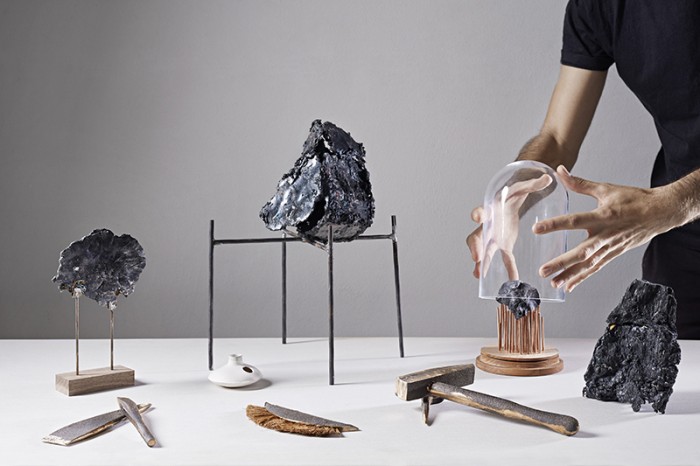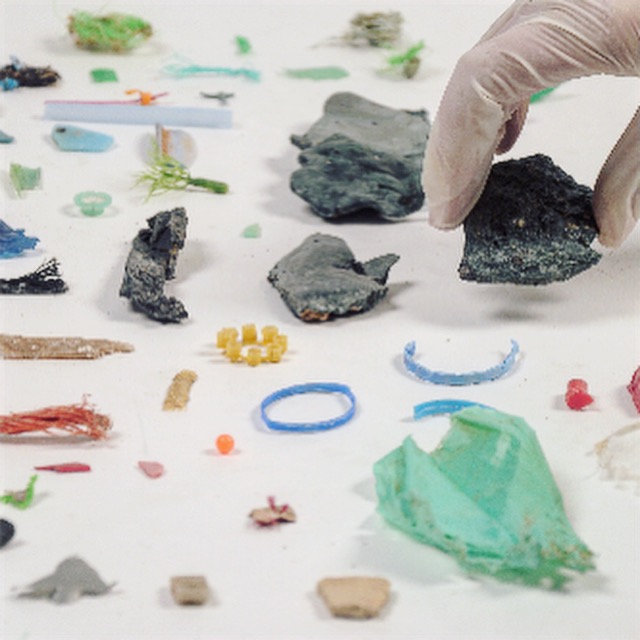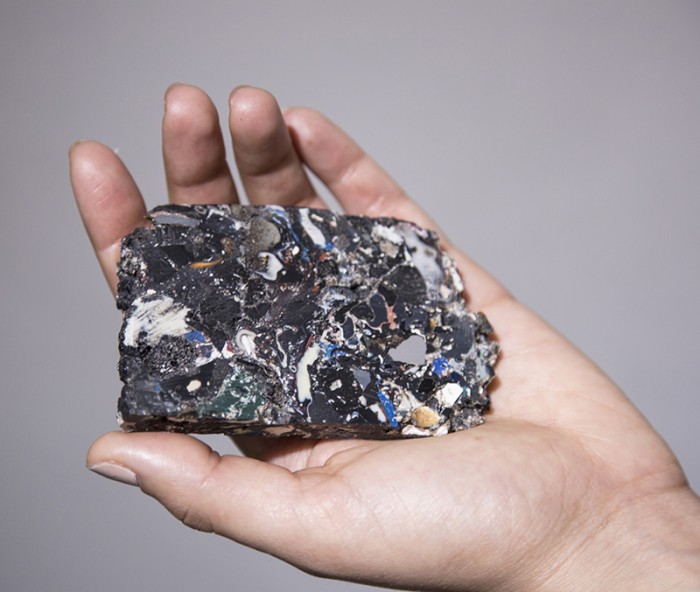Jim Biddulph in conversation with Shahar Livne
With a specific focus on plastic, and the release of our short documentary Materials, Living with plastic this month, it seemed fitting to talk to a designer who has explored the material and speculated upon it’s changing impact.

Israeli-born and Eindhoven based designer Shahar Livne is a graduate of the Man + Leisure program at the Design Academy Eindhoven, a course that challenges it’s students to reengage with the freedom of leisure time and our ability to learn within it. Adopting a mindset that considers the relationship between user, context and materialization, Shahar set about exploring the potential impact of plastic, specifically in the form of Plasiglomerates. Her project Metamorphism envisages a valuable commodity in the form of Lithoplast, a material made up of merged waste plastic and post-industrial waste.
It grabbed a lot of attention, and continues to do so, with exhibitions at Dutch Design Week and Milan proving to be very popular. Whilst currently carrying out the post of designer in residence at the Materials Experience Lab at the Technical University of Delft, as well as collaborating on Dutch Invertuals, Shahar continues to develop her research. We caught up with her to find out more about how she came to work in this way and to find out her view on the future of plastic.

From one material geek to another, I can tell that they fascinate you! Where do you think your passion for materials come from?
I have always had a tendency to touch everything. I guess it all started with that tactile approach. I majored in art and biology in high school since processes and transformations always fascinated me. Only during my Bachelor studies at the Design Academy I realized that I always draw inspiration from the material at first and the concept and design follows.
I see materials more than physical characteristics; each encapsulate and have the potential for embodying narrative, whether by aesthetics, history or cultural relationships, and for me this is extremely fascinating.
You’ve used some less-than-ordinary materials in your work, why do you think you are drawn to such materials and processes?
As I mentioned in the former question, I was always drawn to biology, chemistry and art at the same time. Some of this fascination comes from my father who took me to art and natural history museums a lot as I grow up and I think I inherited his endless curiosity. I’ve always liked to look into the natural world and try to understand it’s mechanisms, and you can see in all of my projects a connecting link to nature.
” I think only the future will tell how humans will deal with this amazing monster we created, since for the time being, I am not convinced we have found a genuine replacement or sustainable uses yet.”
Plastic is clearly a hot topic at the moment and your material of choice to focus upon in your project Metamorphism. What is your relationship to plastic?
As with every human being, I am very reliant on plastics. I have mixed feeling towards it personally, since it does hurt ecosystems and has been proven that chemicals from it leach into our bodies, yet, we are extremely dependent on it in every aspect of our life. Everything from health to technology, agriculture to living environments, it is heavily embedded in human society and culture. But as a designer, I am fascinated by it.

A lot of the comments made about plastic during this recent surge of interest focus upon the negative aspects, with a real backlash against this relatively new material. As someone who has worked with and asked a lot of questions of it as a material, what is your view on plastic?
I put a lot of emphasis when I explain the Metamorphism project that I do not take a negative or positive opinion, since ‘good’ and ‘bad’ are human made notions. For me it is more interesting to look at metabolism and the way humans create and interact with the environment, and to do so I must take a neutral perspective. As we are over employing the natural resources of fossil fuels, and reaching (maybe already reached) peak oil, we must consider a solution. There are many nice and positive projects that deal with plastic pollution, recycling, re-purposing or alternatives out there now. But it doesn’t feel that any one of them is really a “solution” as none of them are yet to make any significant effect, we are still bombarded with dooms day scenarios when it comes to plastic use.
I use Metamorphism as a study case and it should be looked beyond its embodiment in plastic; it is a ‘thought-experiment’ on materials production and culture, in both historical and futuristic contexts.

So where do you think the future of plastic lies?
At the moment I still see it as a sole solution to most human technologies. As peak oil will be a real problem for us at some point, and not only for the production of plastic, it should be replaced. However, any replacement will still be dependent on the exploitation of resources. I’m sure its replacement will be found in nature in some form and as things change the technology and resources we know now will disappear and our plastic will become nostalgic and rare. I think only the future will tell how humans will deal with this amazing monster we created, since for the time being, I am not convinced we have found a genuine replacement or sustainable uses yet.
As someone who is running their own studio and essentially investigating alone, do you think material researchers and experimenters get enough support? Could big industry, governments, organisations or manufacturers help things progress?
Well, it’s a growing field. Looking at fellow designers, educational programs and industry, there is a big interest and support in materials development. Since my work is mainly focused on the more conceptual side of materials and not necessarily on material engineering or industrial oriented material design I can only say what I see from the side. With my own field, which can perhaps sometimes be seen to the outsider as non-functional in the traditional sense, there is a lot of interest in the design world. It’s academic research and that’s how it gets to the general public; we create knowledge and preserve culture, without always creating solutions per se, and as important part of culture it should definitely be considered as important to everybody, including big industry, governments, organizations and manufacturers to help things progress and evolve.
For more information about Shahar and her work visit www.shaharlivnedesign.com




